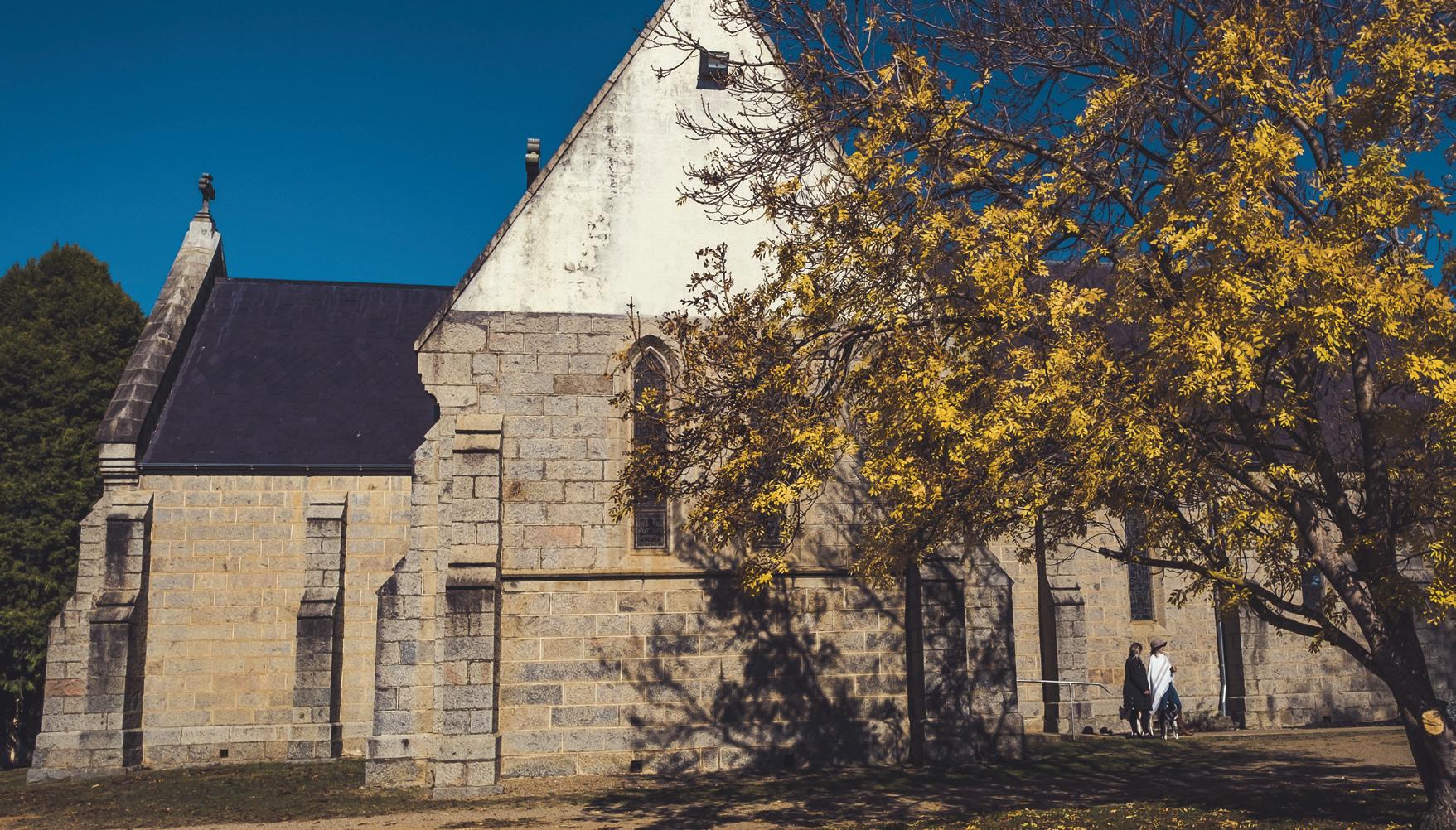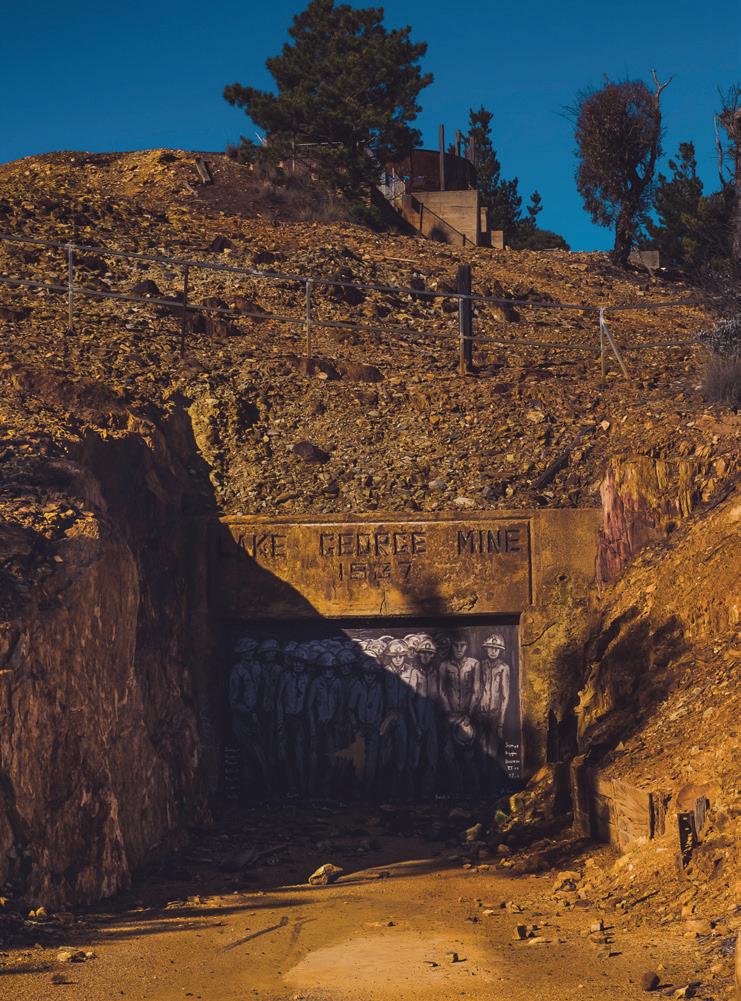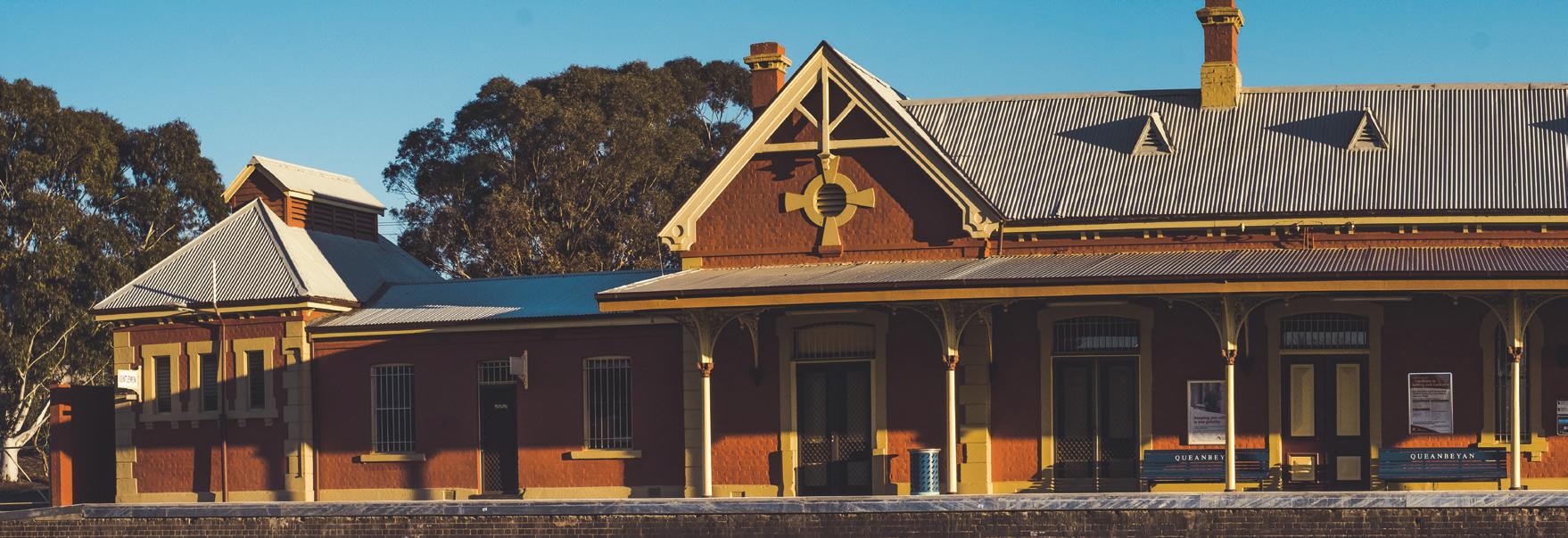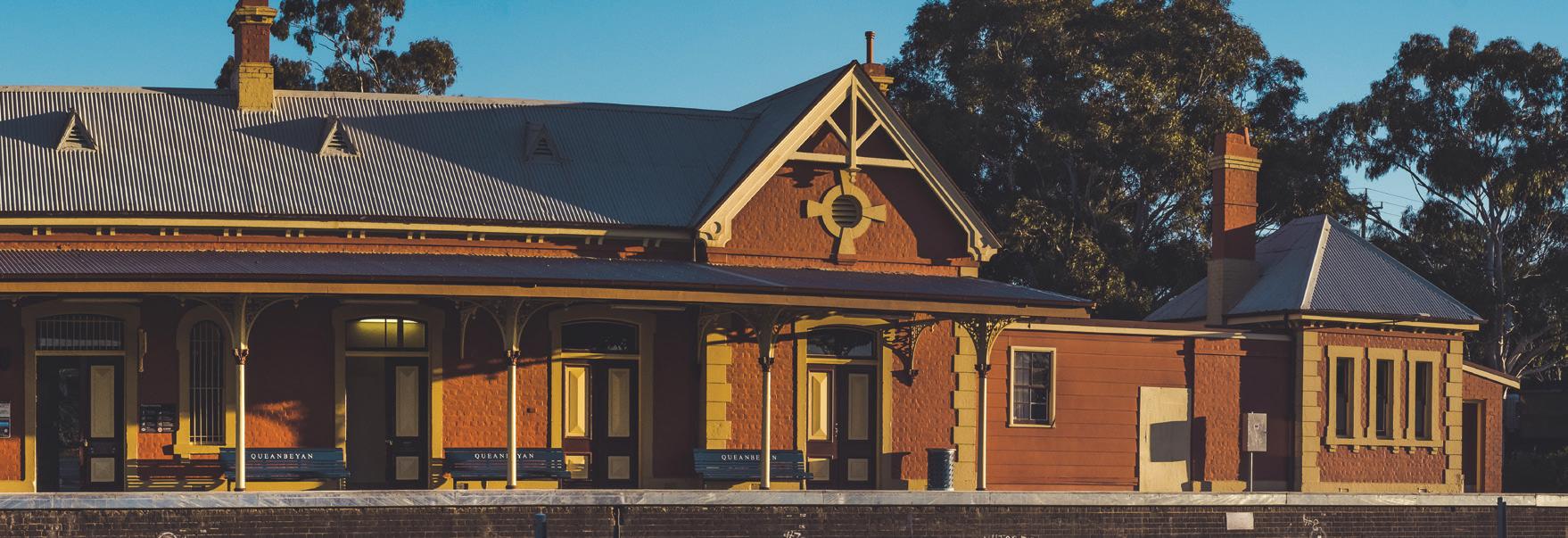
5 minute read
LIVING HERITAGE
Living e r itage
Queanbeyan-Palerang is filled with charming old gold-rush villages, colonial architecture and heritage-listed sites, still standing tall to represent both the country’s Indigenous heritage as well as Australian history from the early days of the European settlement.

IMAGES Left to right: St Bede's Catholic Church, Braidwood; Lake George Mine (1937), Captains Flat.
TO REALLY GET A FEEL FOR A PLACE, IT HELPS TO UNDERSTAND ITS HISTORY.
TAKE YOURSELF ON A HERITAGE TOUR
Head to our website for local heritage tour maps and suggested itineraries INDIGENOUS HISTORY
The history of the region dates back to a time far before the arrival of European settlers. For tens of thousands of years, the land has been home to some of the world’s oldest known cultures, the Ngunnawal and Walbunja Nations. For millennia, the rivers of the region have been its backbone, working as pathways connecting different parts of the land together. Plants were an integral part of survival. The varied ecosystems of the region provided the people with different types of food, medicines and materials. Traditionally, pathways from the valleys to the mountains were followed in search for seasonally available food such as the Bogong Moth. Shelter from strong winds, rain and sun was often sought under natural rock overhangs. The Ngunnawal people were gifted canoe-makers, collecting the bark of trees to build canoes, shelter and domestic articles. Trees used for these kinds of purposes are called scarred trees, and they were a vital part of Aboriginal material culture.
On the other side of the Shoalhaven River, the Ngunnawal people’s traditional neighbours, the Walbunja people farmed the land without leaving any signs of farming practices behind. On few occasions, they would walk up to Ngunnawal country for important events such as the Bogong Moth Festival. To this day, the connection between the two nations remains strong. The Canberra region was also a significant meeting place to neighbouring clans, such as the Ngarigo, Wolgalu, Gundungurra, Yuin and Wiradjuri people. The different clan members would get together in the land for ceremonies, trading and marriages. Meetings and ceremonies would often take place at sites like Tidbinbilla and Namadgi National Park in present-day ACT, and around Queanbeyan Showgrounds and Googong Dam in Queanbeyan-Palerang. The heritage of these nations lives on strong in the region. Many of the precincts in the wider region got their names from Aboriginal languages, including Queanbeyan, which got its name from the Aboriginal word Quinbean, meaning ‘clear waters’. Visitors can also visit exhibitions and self-guided public art tours to view fascinating Aboriginal art depicting the stories of the local nations.
Above: Queanbeyan Railway Station.

Many important Aboriginal heritage sites including rock art, stone tools, quarry sites, stone arrangements and campsites can still be seen today, however visitors should be aware of, respect and acknowledge Aboriginal cultural traditions, laws and customs while visiting these sites.
MINING
Mining has been a part of QueanbeyanPalerang's history since the gold rush era. With nearby villages of Araluen, Majors Creek and Captains Flat teeming with prospectors, Braidwood quickly became a vital centre during the goldrush era. In their heyday, the region’s villages were booming with thousands of new residents and dozens of new shops, hotels, schools and churches.
This was a fascinating period complete with bushrangers, an influx of Chinese and Irish prospectors, and growth like never before with everyone looking to get their share of the gold. Chinese miners arrived in the Braidwood district from 1858 on after the start of the district’s mining boom. Many of them moved into the region’s towns and villages after 1875’s decline in the mining population. To this day, the importance of the Chinese-Australian heritage can be seen in Braidwood by the sheer number of buildings associated with them.

In the 1890s, and again in the mid-1900s, Captains Flat became a major mining site in southern NSW. This had a significant impact on the development and settlement of the area at the time. Take a stroll around the village to explore its many historic buildings as well as the Lake George Mine entrance and the Miners’ Memorial - remnants of the village’s history.
GOLD FEVER & BUSHRANGERS
The colonial history of the region shows that life in the late 1800s and early 1900s was not easy. The region’s romantic past of struggle and resilience would not be complete without the infamous bushrangers. Settlers were terrorised and murdered, their settlements pillaged and ransacked. The bandits stole anything of value including horses, gold, food and weapons from the settlers, miners and Indigenous communities.
The region was particularly popular among bushrangers as gold fever struck the region in the mid-1800s, especially around the villages surrounding Braidwood. The most notorious of them were Braidwood’s Clarke Brothers. Considered some of Australia’s bloodiest bushrangers, this deadly duo terrorised southeastern NSW from 1865 to 1867.
In Bungendore, an English convict by the name of Jackey Jackey also took up a life of bushranging. He was notorious for exchanging outfits with his victims, wreaking havoc across Queanbeyan, Bungendore and Braidwood. After a series of incarcerations and escapes, his exploits were cut short after he was arrested in 1841.
Much like Jackey Jackey, Boro local Frank Gardiner’s bushranging career was also characterised by a series of robberies, arrests and dramatic escapes. Referred to as the ‘Father of Bushranging’, Gardiner is best known for his 14,000-pound heist at Eugowra, aided by such bushranging associates as the legendary Ben Hall. Legend has it that Gardiner had relatives living near Queanbeyan and he stayed with them while hiding after the Eugowra robbery. While some of the gold was recovered in Forbes, mystery still surrounds what happened to the remaining treasure. Could some be hidden in the hills of Queanbeyan?
TRAVEL THE PATH OF BUSHRANGERS
Let your imagination run wild as you travel in the footsteps of infamous bushrangers. Drive up the narrow, winding road from Araluen to Majors Creek on which gold escorts were ambushed by fearless bushrangers. More info:










